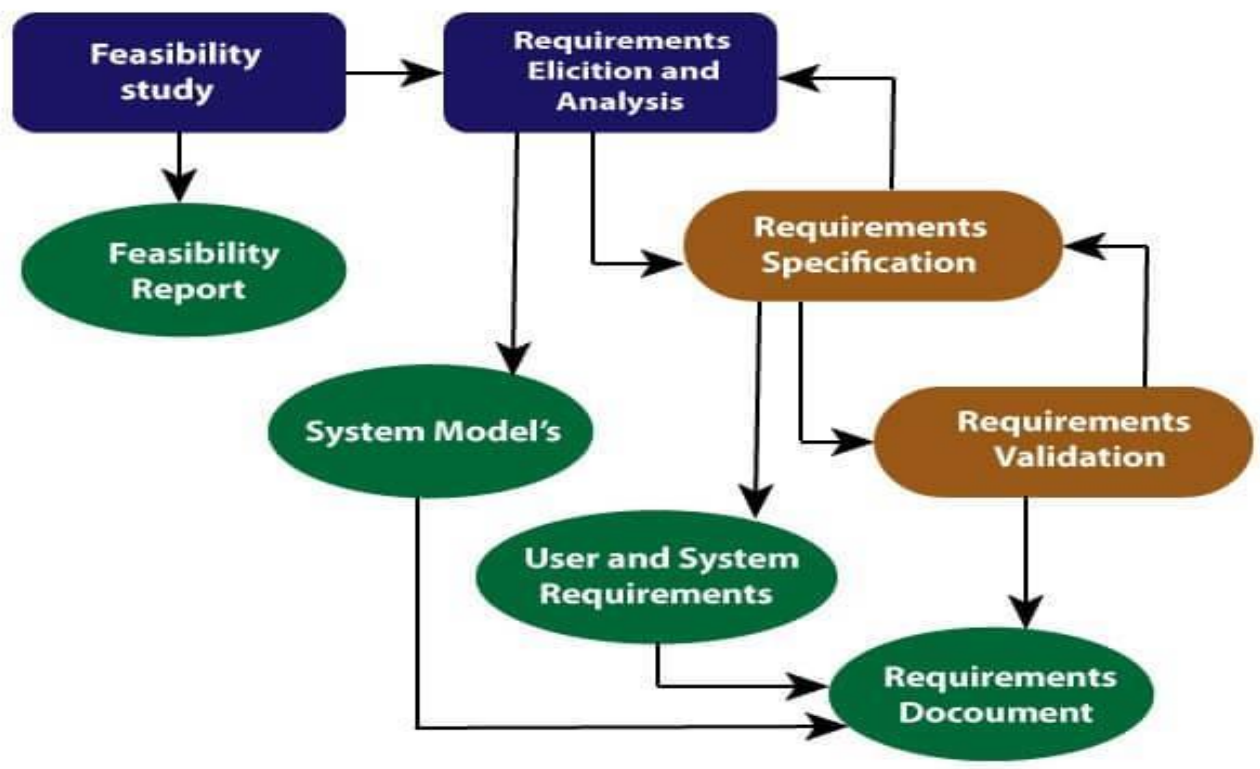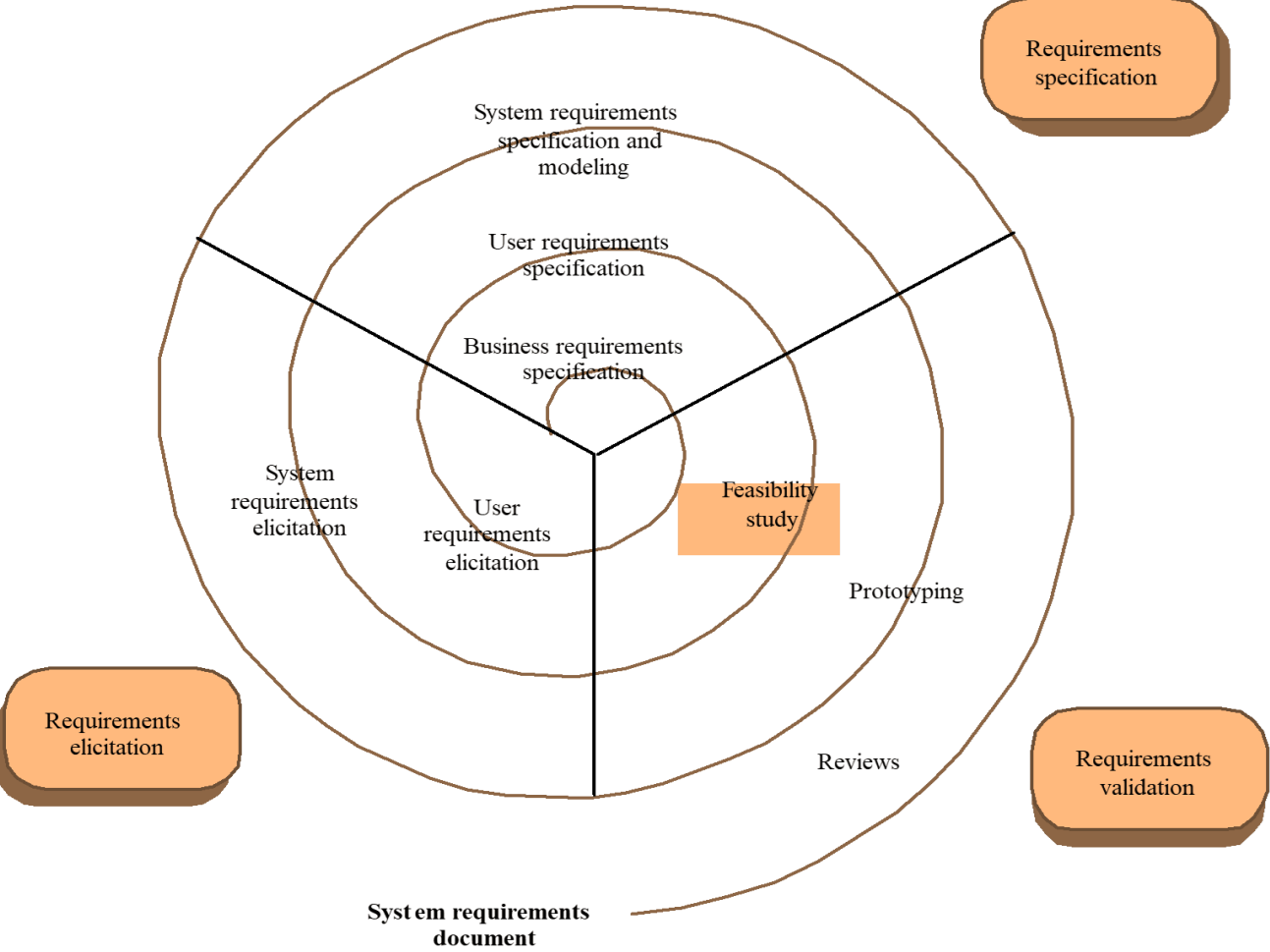6/8/25About 471 words
- The processes used for requirements engineering vary widely depending on the application domain, the people involved and the organization developing the requirements.
- The goal of this stage of the software engineering process is to help create and maintain a system/software requirements document.
Processes
- Requirements Elicitation
- What services do the end-users require of the system?
- Requirements Analysis
- How do we classify, priorities and negotiate requirements?
- Requirements Validation
- Does the proposed system do what the user require?
- Requirements Management
- How do we manage the (sometimes inevitable) changes to the requirements document?
Four High-Level Activities
- Feasibility Study
- Elicitation and Analysis
- Specification
- Validation


Feasibility Study
- A short, focused study that should take place early in the requirement engineering process. It should answer three key questions:
- does the system contribute to the overall objectives of the organization?
- can the system be implemented within schedule and budget using current technology?
- can the system be integrated with other systems that are used?
Elicitation and Analysis
- Software engineers work with customers and system end-users to find out about the application domain, what services the system should provide, the required performance of the system, hardware constraints, and so on.
- Stakeholders (end-users, managers, engineers) also may involve in maintenance, domain experts, trade unions, etc.
Specification
- Requirement Discovery: Interact with stakeholders of the system to discover their requirements.
- Requirements Classification and Organization: Take the unstructured collection of requirements, groups related requirements, and organizes them into coherent clusters.
- Requirements Prioritization and Negotiation: This activity is concerned with prioritizing requirements and finding and resolving requirements conflicts through negotiation.
- Requirements Specification: The requirements are documented and input into the next round of the spiral.
Requirements Validation
- Requirements validation is the process of checking a software system meets specification, what the customer needs.
Types of Validation
- Validity Checks: A user may think that a system is needed to perform certain functions.
- Consistency Checks: Requirements in the document should not conflict.
- Completeness Checks: The requirements document should include requirements that define all functions and the constraints intended by the system user.
- Realism Checks: Using knowledge of existing technology, the requirements should be checked to ensure that they can actually be implemented.
- Verifiability: To reduce the potent, system requirements should always be written so that they are verifiable.
Requirements Validation Techniques
- Requirements Reviews: Analyze the requirements systematically, checking for errors and inconsistencies.
- Prototyping: An executable model of the system in question is demonstrated to end-users and customers.
- Test-case Generation: Requirements should be testable.
